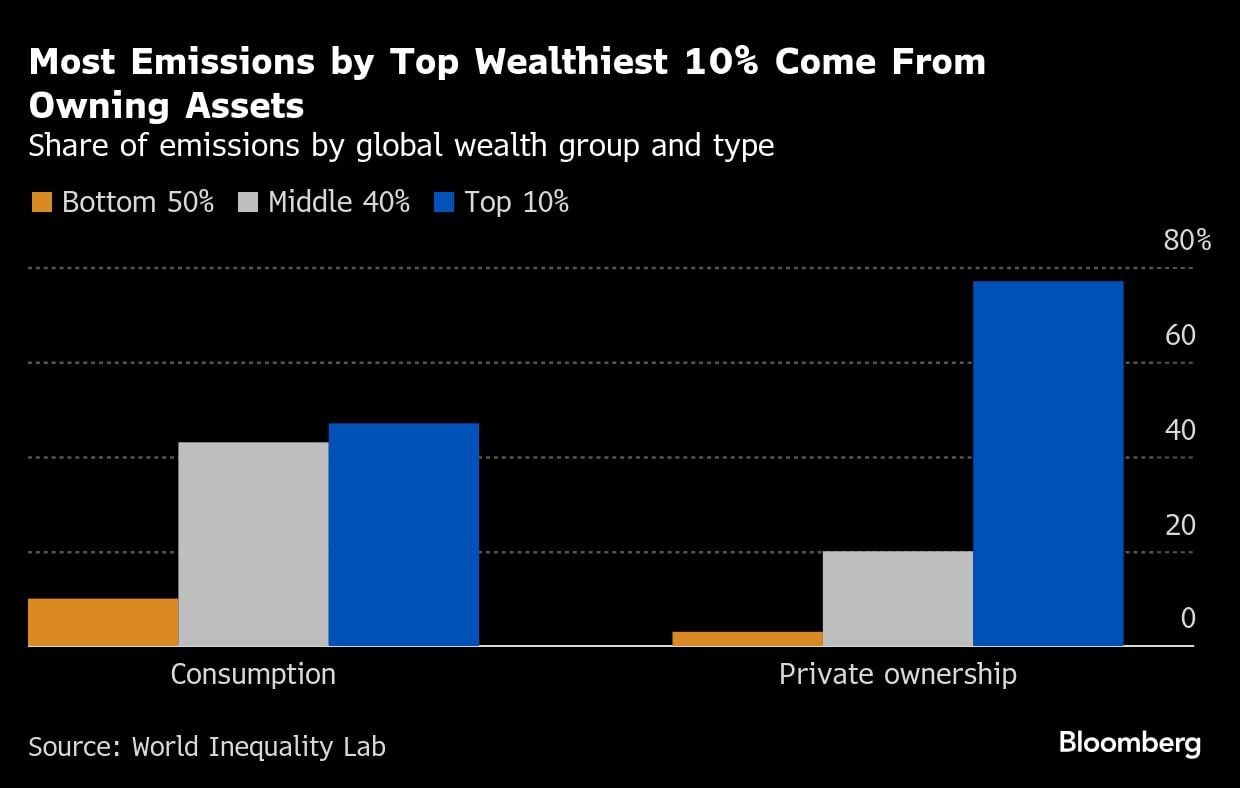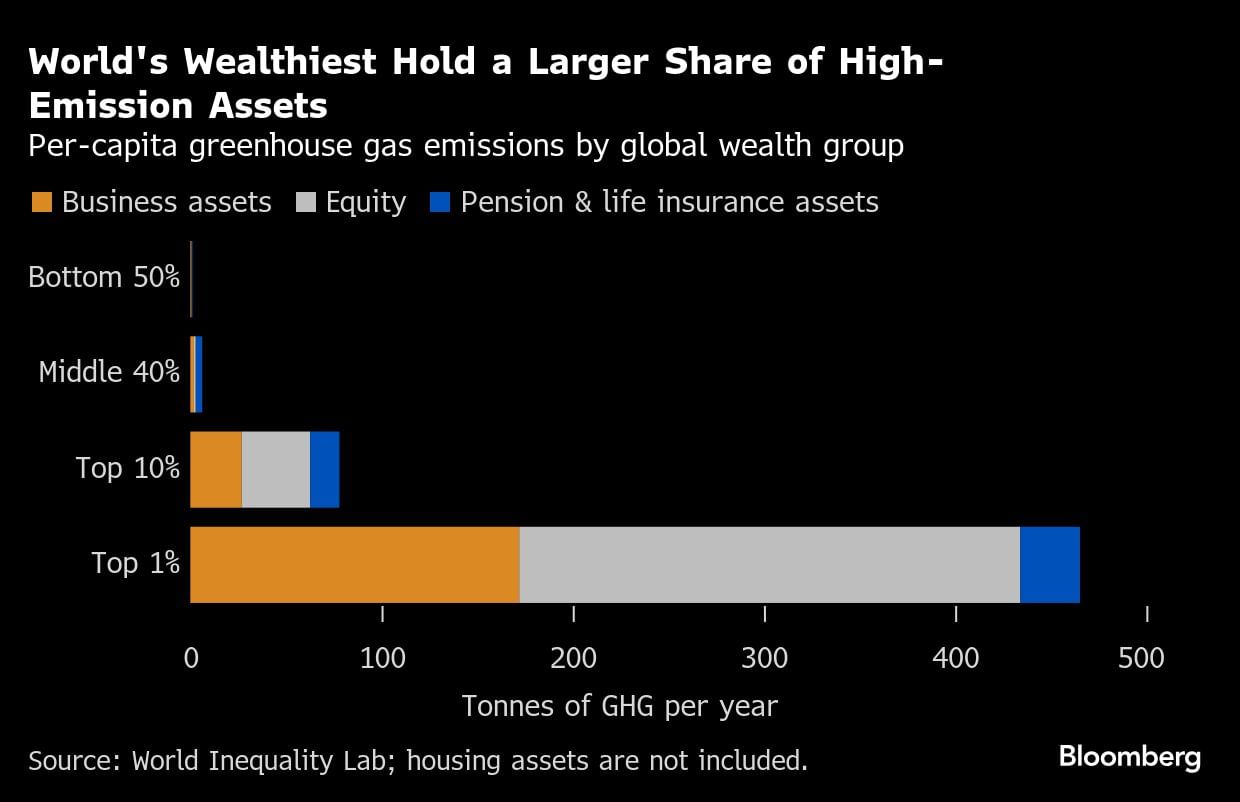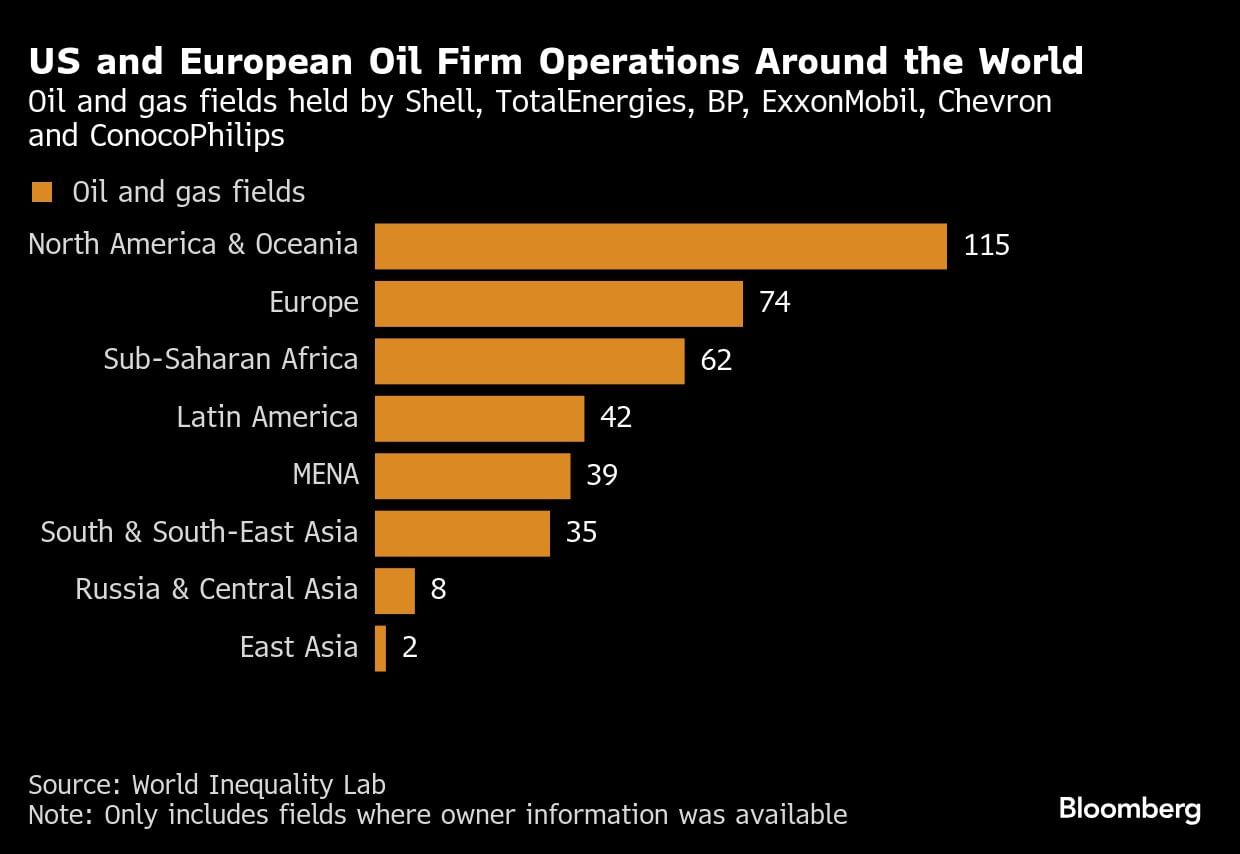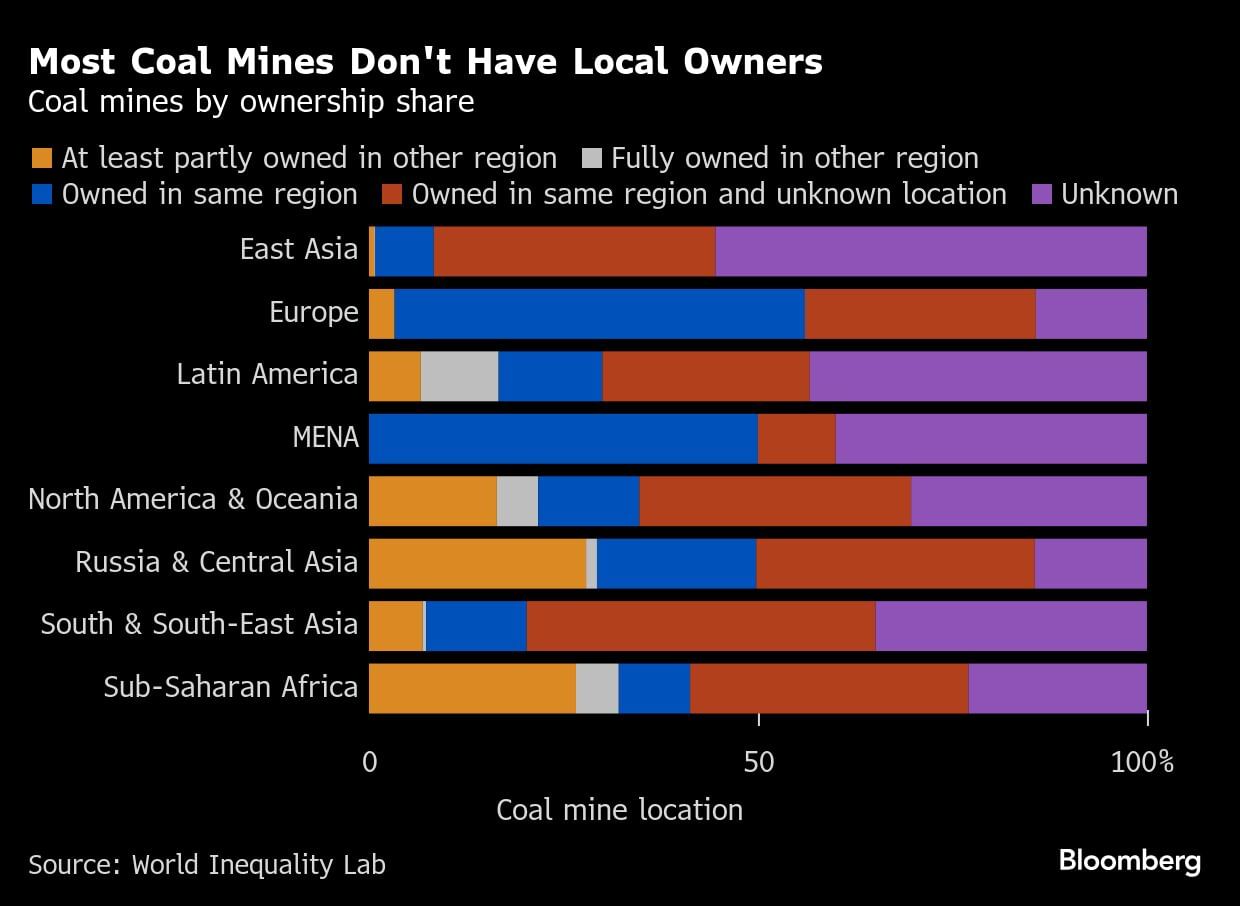The world’s wealthiest individuals fuel climate change through more than just buying goods and using energy — they also invest in polluting assets, according to a new report.
The wealthiest 1% of the global population accounts for 15% of all emissions attributed to consumers, but if their carbon footprint is measured by the assets they own, their share jumps up to about 40%, the study, conducted by researchers at the World Inequality Lab, found.

To calculate this, the lab, based at the Paris School of Economics and the University of California at Berkeley, looked at emissions generated by the investments, company stakes and other assets held by people around the world. For example, under this accounting setup, emissions from oil extraction would be attributed to the owners of the oil company’s stock, even if those owners are sitting on another continent and don’t use the energy the company produces.
“Wealth matters, perhaps even more than consumption, for understanding and addressing the climate crisis,” the researchers, Cornelia Mohren and Lucas Chancel, said in an email. “Because the wealthiest households own and control the capital that determines future emissions, climate policy must look beyond carbon taxes on consumers.”
Under the Lab’s methodology, most of the emissions generated by the world’s wealthiest people come from asset ownership. In the US, France and Germany, about 75% of the emissions attributed to the top 10% richest individuals come from the assets they own. This share becomes larger among the top 1%, with about 90% of their emissions coming from assets. (The emissions by asset ownership calculated by the researchers make up about 60% of global emissions, because they don’t include those generated by households, nor governments.)

The researchers found that of the asset-related emissions from the world’s wealthiest people, most come from equities they own, including oil company stocks.
In addition to looking at who owns oil and gas companies, the researchers tracked where some of these firms operate. They found that about half of the oil and gas fields held by six of the world’s major oil companies, which are headquartered in Europe and North America, are spread along the Global South.

In other words, the researchers say, even as residents of the world’s richest countries use more renewable energy at home, they still generate emissions from fossil fuels through the carbon-intensive assets they own abroad. “Part of their apparent climate progress relies on outsourcing emissions through global capital markets,” the researchers wrote.
A large portion of coal mines around the world is also owned by people who are not local. In Sub-Saharan Africa, more than 30% are controlled at least partly by companies from outside of the area — though it’s hard to trace where the owners are based.

These findings have implications for climate policy, the researchers say. Because most of their emissions are generated through owning assets, the wealthiest could cut them without changing how they live. The study also suggests that redirecting capital flows away from polluting industries and into more public investments is necessary to achieve climate goals.
“Ultimately, the report shows that decarbonizing asset portfolios is at least as important as decarbonizing consumption patterns,” the researchers said.
(Reporting by Renata Carlos Daou and Emily Biuso)
Disclaimer: This report is auto generated from the Bloomberg news service. ThePrint holds no responsibility for its content.






